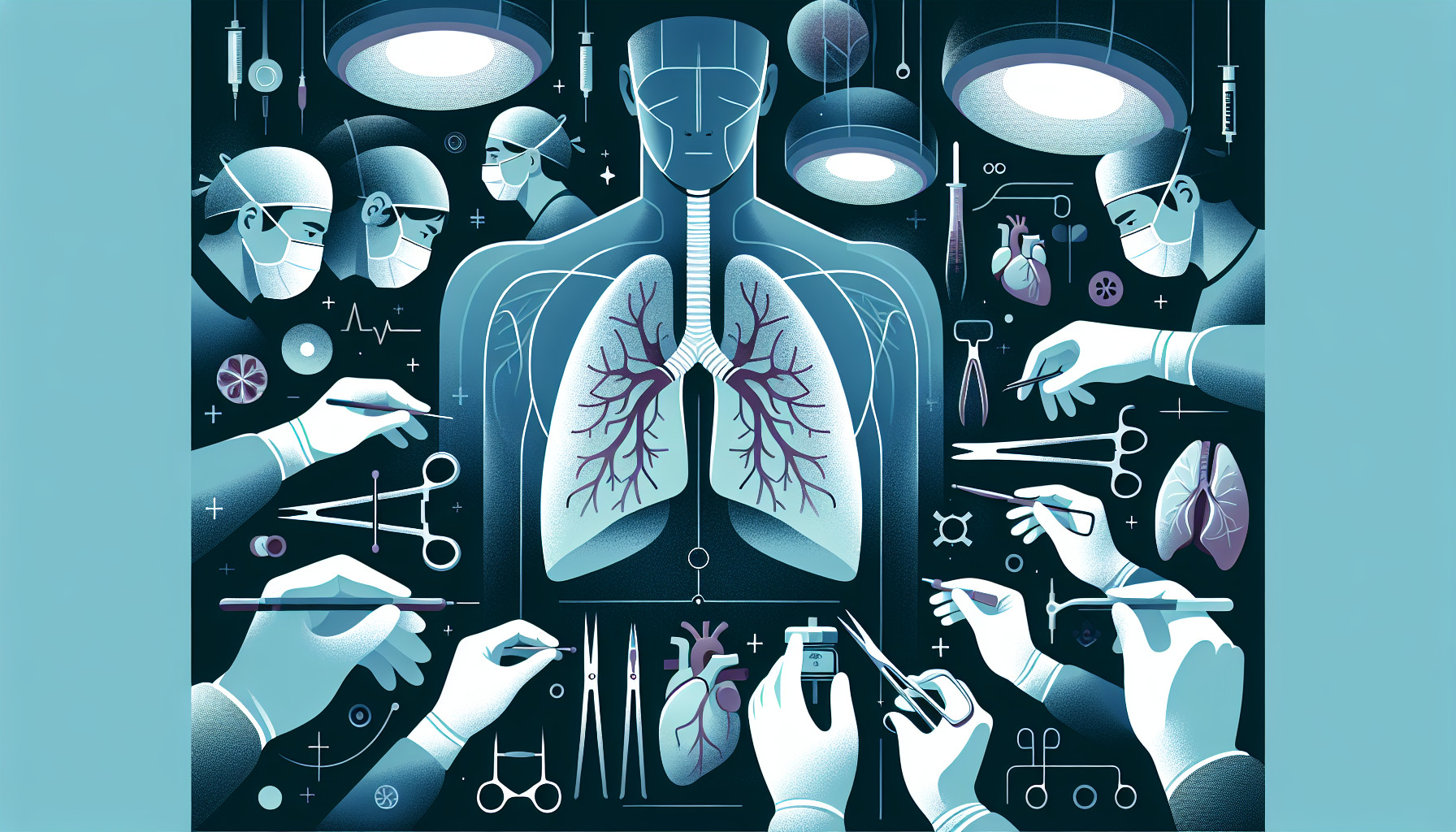Our Summary
This research paper looks at the effect of prolonged ischemic time, or the time when an organ does not have a blood supply, on outcomes after a lung transplant. The study uses data from the United Network for Organ Sharing and examines the results in relation to the volume of transplants a center performs.
The researchers found that patients who had their transplants at high-volume centers, where many transplants are performed, had better survival rates than those at low-volume centers, despite the fact that the high-volume centers had longer average ischemic times.
Interestingly, the study found that longer ischemic times negatively affected survival rates at low-volume centers, but not at high-volume centers. For instance, at centers that performed 50 transplants from 2005-2015, an ischemic time of 8 hours compared to 6 hours was associated with an almost 19% higher risk of death. However, at centers that performed 350 transplants in the same period, the length of ischemic time did not affect survival rates.
So, even though high-volume transplant centers had longer average ischemic times, they still had better patient outcomes and no negative impact on survival rates due to the prolonged ischemia.
FAQs
- What is the effect of prolonged ischemic time on lung transplant outcomes?
- Do high-volume transplant centers have better survival rates despite longer average ischemic times?
- Does the length of ischemic time affect survival rates at centers that performed a high number of transplants?
Doctor’s Tip
Therefore, it is important for patients considering a lung transplant to research and choose a high-volume transplant center, as they tend to have better outcomes despite potentially longer ischemic times. It is also important for patients to discuss with their doctors the potential risks and benefits of prolonged ischemic times and how it may impact their individual transplant procedure. Regular follow-up appointments and adherence to post-transplant care instructions are also crucial for a successful outcome after a lung transplant.
Suitable For
Patients who are typically recommended for lung transplant include those with end-stage lung disease, such as chronic obstructive pulmonary disease (COPD), idiopathic pulmonary fibrosis, cystic fibrosis, and pulmonary hypertension. These patients may have severe symptoms, such as shortness of breath, fatigue, and a decreased ability to perform daily activities. Lung transplant may be recommended when other treatments, such as medications or oxygen therapy, are no longer effective in managing the symptoms of the disease.
In addition, patients who are relatively young and healthy aside from their lung disease, have a strong support system, and are willing to adhere to a strict post-transplant regimen are also good candidates for lung transplant. Patients who have complications from their lung disease, such as frequent infections or respiratory failure, may also be recommended for lung transplant.
Overall, the decision to recommend a patient for lung transplant is made on a case-by-case basis by a multidisciplinary team of healthcare providers, including pulmonologists, transplant surgeons, social workers, and psychologists. The goal is to ensure that the patient is a good candidate for the procedure and has the best chance of success after the transplant.
Timeline
Before lung transplant:
- Patient is diagnosed with a severe lung disease such as chronic obstructive pulmonary disease (COPD) or idiopathic pulmonary fibrosis.
- Patient undergoes thorough evaluation by a transplant team to determine if they are a suitable candidate for a lung transplant.
- Patient is placed on the waiting list for a suitable donor organ.
- Patient waits for a donor organ to become available, which can take months to years.
- Once a donor organ is available, patient undergoes the lung transplant surgery.
After lung transplant:
- Patient spends time in the intensive care unit recovering from the surgery.
- Patient is closely monitored for signs of organ rejection and infection.
- Patient undergoes rehabilitation to regain strength and lung function.
- Patient must take immunosuppressant medications for the rest of their life to prevent rejection of the donor organ.
- Patient attends regular follow-up appointments with their transplant team to monitor their health and adjust medications as needed.
- Patient must make lifestyle changes such as quitting smoking and maintaining a healthy diet and exercise routine to ensure the success of the transplant.
- Patient may experience complications such as organ rejection, infection, or side effects from medications, which require further treatment and monitoring.
What to Ask Your Doctor
- How does the volume of lung transplants performed at a center affect patient outcomes?
- What is the average ischemic time at the center where I will be receiving a lung transplant?
- How does prolonged ischemic time impact the success of a lung transplant?
- Are there any specific factors that may make me more or less susceptible to the effects of prolonged ischemic time?
- What steps does the transplant center take to minimize the negative effects of prolonged ischemic time?
- Are there any alternative treatment options or strategies that can be used to mitigate the impact of prolonged ischemic time on outcomes?
- How will the transplant team monitor and manage any complications that may arise due to prolonged ischemic time during and after the transplant procedure?
- What is the center’s success rate in performing lung transplants, and how does it compare to national averages?
- Are there any specific post-transplant care guidelines or recommendations that I should follow to optimize my chances of a successful outcome, particularly in relation to prolonged ischemic time?
- Are there any ongoing research studies or advancements in the field of lung transplantation that may impact the management of prolonged ischemic time in the future?
Reference
Authors: Hayes D Jr, Hartwig MG, Tobias JD, Tumin D. Journal: Am J Transplant. 2017 Jan;17(1):218-226. doi: 10.1111/ajt.13916. Epub 2016 Jul 13. PMID: 27278264
